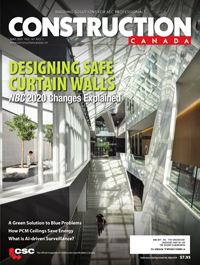Sprayfoam to HFO: the blowing agent’s shift explained

Further, blowing agents are divided into endothermic and exothermic foaming agents. Endothermic chemical foaming agents take heat away from the chemical reaction, producing foams with a much smaller cell structure, resulting in improved appearance and better physical properties. Exothermic chemical foaming agents generate heat during the decomposition process. They liberate more gas per gram of foaming agent than endothermic agents and produce higher gas pressure.
Usually, exothermic blowing agents tend to make larger cells compared to endothermic. In a system, a good balance between endothermic and exothermic blowing agents will make a better dimensionally stable foam. Endothermic blowing agents also give higher R-value to the foam.
HFC- and HFO-based sprayfoam blowing agents are both physical and endothermic blowing agents.
The European FluoroCarbons Technical Committee (EFCTC), a Cefic sector group, defines what makes a good insulation foam blowing agent by stating, “foam blowing agent is selected to provide a closed-cell structure which minimizes heat transfer, in part due to the properties of the foam blowing agent, which is retained within the foam essentially for the lifetime of the foam’s use.”
Producers dissolve the blowing agent into precursors where it expands to form the foam once injected or sprayed, causing the foaming reaction to start. Optimization is crucial to ensure thermal efficiency and overall performance. Foam blowing agents with low thermal conductivity can improve insulation properties of the foam, allowing better insulation performance or thinner profiles for the same value. The committee further points out how emissions from closed-cell foam are typically less than two per cent annually, so this thermal performance persists over time.2
The evolution of blowing agents
Blowing agents used in SPFs have evolved over time, with the phase-out of specific compounds occurring at various points in the past. The first class of blowing agents, used between 1950 to 1980, in sprayfoam were chlorofluorocarbons (CFCs). They have a global warming potential (GWP) of more than 4000 and an ozone depletion potential (ODP) of one. Second generation blowing agents were hydrochlorofluorocarbons (HCFCs), used between 1980 to 1990, and they have a GWP of more than 725 (and can range up to 2310) and an ODP of approximately 0.055 to 0.11.3
HFCs are the third iteration of sprayfoam blowing agents, they were used in 1990 and are still found in products today. They offer zero ODP; however, they have a GWP value of more than 794 (and up to 3220).4 Once considered a suitable replacement for ozone-depleting substances, HFCs are now the world’s fastest-growing greenhouse gases. HFCs have up to 4000 times more global warming impact than carbon dioxide (CO2).5 Scientists estimate HFCs alone could contribute up to 0.5 C (32.9 F) of global warming by the end of the century.6
It is for this reason the industry has shifted towards the use of HFOs in the year of 2020, which offer zero ODP and a GWP value of less than 25.7 Some HFOs even offer a GWP value of one. Note the dramatic difference between first generation blowing agents (CFCs) and the new, fourth generation of blowing agents (HFOs)—an initial GWP of more than 4000 to a GWP, today, of just one.
A defining moment: 1987’s Montreal Protocol
An international effort to protect the earth is the backdrop for the periodic phase-out of specific sprayfoam blowing agents. This movement began an effort to slow the loss of stratospheric ozone when, in 1987, the international community signed the original Montreal Protocol. The agreement mandated that developed countries begin phasing out the use of CFCs, which are known to destroy the ozone layer. This agreement called for participating countries to achieve a 50 per cent reduction in the use of CFCs, relative to 1986 levels by 1998. The Montreal Protocol was essentially the world’s first step of many in protecting the ozone layer.
However, new data became available afterwards which demonstrated worse than expected damage to the ozone layer. This data ultimately led to a series of amendments to the initial agreement, all of which were aimed at controlling additional ozone depleting chemicals and identifying mechanisms to enforce the compliance of developing countries.8 The amendments, in sequential order, include the London Amendment in 1990, the Copenhagen Amendment in 1992, the Montreal Amendment in 1997, the Beijing Amendment in 1999, and the Kigali Amendment in 2016.


